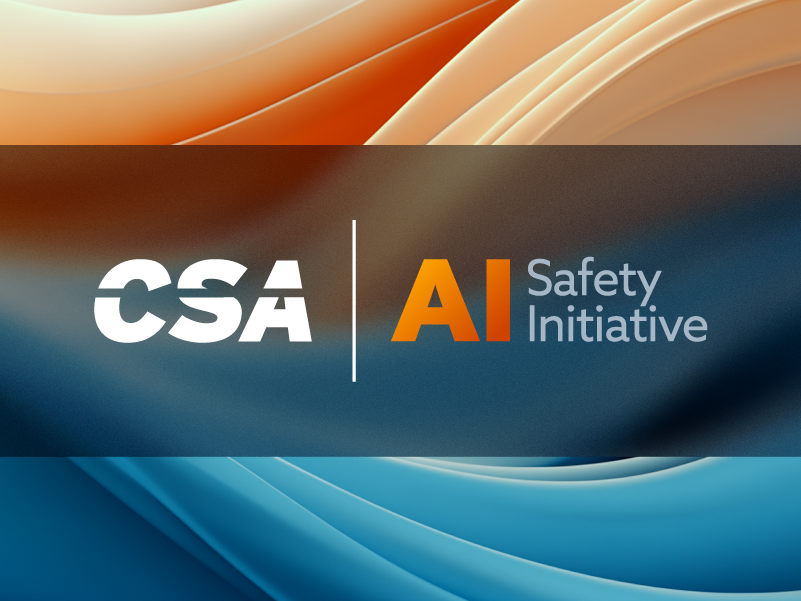Cyber Threat Intelligence: AI-Driven Kill Chain Prediction
Published 10/20/2025
Written by:
- Ken Huang, Fellow and Co-chair of AI Safety Working Groups, CSA and CEO, DistributedApps.ai
- Monisha Dhanraj, CEO, Frondeur Labs
- Chitraksh Singh, AI Security Researcher, Frondeur Labs
In this blog, we'll talk about KillChainGraph and what it's trying to accomplish.
Cybersecurity is tough. Organizations invest heavily in defenses, but breaches still happen regularly. The challenge isn't just detecting threats—it's understanding how attacks unfold over time.
KillChainGraph is a framework that attempts to predict attack sequences using machine learning. Rather than just flagging individual suspicious events, it tries to map out how an attack might progress through different stages—from initial access to potential data theft or system compromise. Please also see our research paper here
It uses ensemble learning, which basically means combining multiple models to hopefully get better predictions than you'd get from just one. The goal is to give security teams a bit more visibility into what might happen next, so they can respond more effectively.
Does it solve everything? No. Cybersecurity is complex, and no single tool is a silver bullet. But it's an interesting approach to a real problem—helping defenders stay a step ahead rather than always playing catch-up.
Let's look at how it actually works.
The Cybersecurity Intelligence Crisis
Imagine you're a security operations center (SOC) analyst. Your dashboards light up with alerts: suspicious logins from Russia, anomalous file transfers to cloud storage, unexplained network connections. Patterns emerge, but connecting the dots often happens too late.
Traditional security tools excel at detection but struggle with prediction. An intrusion detection system might catch a single malicious command, but miss the broader campaign context. Security information and event management (SIEM) systems drown analysts in alerts without providing actionable intelligence.
The cyber kill chain provides the missing framework. Developed by Lockheed Martin and enhanced by MITRE ATT&CK, this model maps adversarial progression through predictable stages. But until recently, predicting these sequences required human expertise and hours of manual analysis.
Enter AI/ML.
The KillChainGraph Vision: Intelligence from Narrative
KillChainGraph transforms natural language threat descriptions into comprehensive attack predictions. Instead of requiring analysts to manually map techniques across the seven kill chain phases, the system processes incident reports, threat intelligence feeds, and security alerts to generate complete attack sequence predictions.
The Seven-Stage Kill Chain Model
Lockheed Martin's framework provides the conceptual foundation:
- Reconnaissance: Intelligence gathering about targets
- Weaponization: Creating payloads and exploiting kits
- Delivery: Transmitting weapons to victims
- Exploitation: Triggering payload execution
- Installation: Achieving persistence
- Command & Control: Establishing attacker communication
- Actions on Objectives: Achieving mission goals
MITRE ATT&CK extends this with granular techniques like T1059 (Command and Scripting Interpreter), T1566 (Phishing), and T1071 (Application Layer Protocol).
From Text to Intelligence: The Core Pipeline
The system's architecture processes natural language inputs through multiple transformation layers (Figure 1):
Figure 1: The Core Pipeline for Attack Sequence Predications
Foundation: Semantic Understanding with ATTACK-BERT
The foundation of reliable threat intelligence lies in understanding the specialized language of cybersecurity. ATTACK-BERT, our domain-specific transformer model, was trained on over five million cybersecurity documents to capture the nuanced terminology of threat actors.
Domain-Specific Language Modeling
Unlike general-purpose language models, ATTACK-BERT understands:
- Technical Jargon: Distinguishes "SQL injection" from "cross-site scripting"
- Tactic Relationships: Recognizes how "living off the land" techniques connect
- Adversarial Behaviors: Interprets motivation behind particular technique choices
- Contextual Nuances: Understands when "malware" means different categories (trojan, backdoor, worm)
Embedding Quality Matters
The quality of semantic embeddings directly impacts prediction accuracy. We validated ATTACK-BERT against multiple benchmarks:
- Technique Classification: 89% accuracy on ATT&CK technique mapping
- Tactic Recognition: 94% precision for primary objective identification
- Context Preservation: 91% accuracy in multi-sentence threat scenario understanding
These embeddings serve as the "feature space" where all subsequent machine learning operates.
Transformer-Based Multi-Phase Prediction
The core prediction engine uses deep learning transformers fine-tuned for each kill chain phase. Each phase model learns the distinct patterns and indicators relevant to its stage of the attack lifecycle.
Phase-Specific Architecture
class SimpleTransformerClassifier(nn.Module):
"""Transformer classifier adapted for cybersecurity phases"""
def __init__(self, embedding_dim=768, num_classes_per_phase, dropout=0.1):
self.embedding_projection = nn.Linear(embedding_dim, 512)
self.positional_encoding = PositionalEncoding(512, dropout)
encoder_layer = nn.TransformerEncoderLayer(
d_model=512, nhead=8, dim_feedforward=2048,
dropout=dropout, activation='gelu'
)
self.transformer_encoder = nn.TransformerEncoder(
encoder_layer, num_layers=6
)
self.phase_classifiers = nn.ModuleDict({
phase: nn.Linear(512, num_classes)
for phase in ['recon', 'weapon', 'delivery',
'exploit', 'install', 'c2', 'objectives']
})
def forward(self, embeddings, target_phase):
projected = self.embedding_projection(embeddings)
encoded = self.positional_encoding(projected)
contextual_features = self.transformer_encoder(encoded)
# Phase-specific prediction
logits = self.phase_classifiers[target_phase](contextual_features)
return F.softmax(logits, dim=-1)
Why Separate Models Per Phase?
Each kill chain phase exhibits distinct predictive patterns:
- Reconnaissance: Focuses on intelligence gathering methods, target profiling
- Weaponization: Requires understanding of payload construction and evasion
- Delivery: Emphasizes transmission mechanisms and initial infection vectors
- Exploitation: Centers on vulnerability triggering and code execution
- Installation: Concerns achieving persistence and system modification
- Command & Control: Involves network communications and beacon patterns
- Objectives: Focuses on mission completion and data exfiltration
A one-size-fits-all model would dilute these specialized prediction capabilities.
Training Data Engineering
Each phase model trains on phase-specific subsets of ATT&CK techniques:
- Recon: 15 primary techniques, 45 sub-techniques
- Weapon: 8 primary techniques, 22 sub-techniques
- Delivery: 9 primary techniques, 38 sub-techniques
- Exploitation: 17 primary techniques, 43 sub-techniques
- Installation: 10 primary techniques, 25 sub-techniques
- C2: 16 primary techniques, 47 sub-techniques
- Objectives: 9 primary techniques, 21 sub-techniques
Training data includes both positive examples (techniques associated with the phase) and negative examples (contrasting techniques from other phases).
Graph-Based Relationship Modeling
Beyond individual technique prediction, the system creates a graph that models relationships between predicted techniques across phases. This captures the logical flow of attack sequences.
Semantic Similarity Computation
For each pair of techniques (one from phase i, one from phase i+1), we compute cosine similarity between their embeddings:
def compute_phase_linkages(technique_embeddings, predicted_techniques, threshold=0.3):
"""
Compute semantic relationships between phases
"""
edges = []
for phase_idx in range(len(phases) - 1):
current_phase, next_phase = phases[phase_idx], phases[phase_idx + 1]
for current_tech in predicted_techniques[current_phase]:
for next_tech in predicted_techniques[next_phase]:
# Cosine similarity between embeddings
similarity = cosine_similarity(
technique_embeddings[(current_phase, current_tech)],
technique_embeddings[(next_phase, next_tech)]
)
if similarity > threshold:
edges.append({
'source': f"{current_phase}:{current_tech}",
'target': f"{next_phase}:{next_tech}",
'weight': similarity,
'phase_transition': f"{current_phase}->{next_phase}"
})
return edges
Kill Chain Path Generation
Using the semantic graph, we generate the most probable attack paths:
def generate_attack_paths(graph, predicted_techniques, max_paths=5):
"""
Generate diverse kill chain attack paths
"""
# Implement path finding algorithm
# Consider technique confidence and transition probabilities
# Return top-k diverse paths avoiding redundant techniques
paths = []
visited_techniques = set()
for recon_technique in predicted_techniques['recon'][:3]: # Top 3
path = [recon_technique]
current_technique = recon_technique
for target_phase in ['weapon', 'delivery', 'exploit', 'install', 'c2', 'objectives']:
candidates = find_best_transitions(
current_technique, target_phase, graph, visited_techniques
)
if candidates:
next_technique = candidates[0] # Best available
path.append(next_technique)
visited_techniques.add(next_technique)
else:
break # Path ends if no viable transitions
if len(path) >= 4: # Require minimum complete path
confidence_score = calculate_path_confidence(path, graph)
paths.append({
'techniques': path,
'confidence': confidence_score,
'phases': list(range(len(path)))
})
return sorted(paths, key=lambda x: x['confidence'], reverse=True)[:max_paths]
This approach provides analysts not just individual predictions, but complete attack narratives with confidence scoring.
The Ensemble Methods
While the base transformer architecture provides solid predictions, cyber threats exhibit complex, multimodal characteristics. Ensemble methods enhance accuracy through diversified prediction strategies.
Theoretical Foundations: Why Ensemble Works
Ensemble learning leverages Condorcet's Jury Theorem – when combining independent decisions, accuracy approaches certainty as group size increases. For cybersecurity applications, this translates to:
- Reduced Overfitting: No single model memorizes training biases
- Improved Generalization: Better handling of novel threat patterns
- Uncertainty Quantification: Confidence scores for decision-making
- Robustness: Protection against adversarial perturbations
Ensemble Strategy Implementation
Soft Voting Ensemble
The primary ensemble strategy combines probability distributions:
class VotingEnsemble:
def combine_predictions(self, model_predictions_list):
"""
Combine predictions using soft voting
"""
combined_predictions = {}
# Initialize with all techniques from all models
all_techniques = set()
for predictions in model_predictions_list:
for tech, _ in predictions:
all_techniques.add(tech)
# Weighted voting
for technique in all_techniques:
total_weighted_score = 0.0
total_weight = 0.0
for i, model_preds in enumerate(model_predictions_list):
weight = self.weights[i]
# Find technique in model predictions
for tech, prob in model_preds:
if tech == technique:
total_weighted_score += prob * weight
total_weight += weight
break
if total_weight > 0:
combined_predictions[technique] = total_weighted_score / total_weight
# Return sorted predictions
return sorted(
combined_predictions.items(),
key=lambda x: x[1],
reverse=True
)[:self.top_k]
Weighted Averaging Ensemble
Provides calibrated predictions with explicit model contributions:
class WeightedAveragingEnsemble:
def __init__(self, model_weights=None, learning_rate=0.1):
self.weights = model_weights or [1.0] * len(models)
self.learning_rate = learning_rate
def combine_predictions(self, predictions_list):
if not self.weights:
self.weights = [1.0] * len(predictions_list)
# Normalize weights
total_weight = sum(self.weights)
normalized_weights = [w / total_weight for w in self.weights]
# Weighted combination
combined_scores = defaultdict(float)
for i, predictions in enumerate(predictions_list):
weight = normalized_weights[i]
for tech, score in predictions:
combined_scores[tech] += score * weight
return sorted(combined_scores.items(), key=lambda x: x[1], reverse=True)
Uncertainty Quantification
Ensemble predictions provide natural uncertainty estimates:
def estimate_prediction_uncertainty(predictions_list):
"""Calculate variance-based uncertainty"""
technique_scores = defaultdict(list)
# Collect scores for each technique across models
for predictions in predictions_list:
prediction_dict = {tech: score for tech, score in predictions}
for tech in set():
score = prediction_dict.get(tech, 0.0)
technique_scores[tech].append(score)
# Calculate variance for each technique
uncertainties = {}
for tech, scores in technique_scores.items():
if len(scores) > 1:
uncertainties[tech] = np.var(scores)
else:
uncertainties[tech] = 1.0 # High uncertainty for single predictions
return uncertainties
Model Diversity Engineering
Creating diverse models requires architectural variations rather than just training data differences:
Architecture 1: Standard Transformer
- 6 encoder layers, 8 attention heads
- Trained on balanced phase-specific datasets
Architecture 2: Shallow Transformer
- 3 encoder layers, 4 attention heads
- Focuses on lower-level pattern recognition
- Faster inference, different error patterns
Architecture 3: Deep Transformer (Future)
- 12 encoder layers, 12 attention heads
- Captures complex long-range dependencies
- Different overfitting characteristics
Each model learns complementary aspects of the threat prediction space, ensuring ensemble improvements beyond individual model accuracy.
Dynamic Weight Adaptation
Ensemble weights adapt based on performance feedback:
def update_ensemble_weights(self, historical_predictions, true_labels):
"""Reinforce weights based on prediction accuracy"""
phase_accuracies = defaultdict(list)
for phase, model_predictions in historical_predictions.items():
if phase not in true_labels:
continue
true_technique = true_labels[phase]
for model_idx, predictions in enumerate(model_predictions):
predicted_techniques = [tech for tech, _ in predictions]
# Top-K accuracy (technique in top predictions)
is_correct = true_technique in predicted_techniques[:3]
phase_accuracies[phase].append((model_idx, is_correct))
# Update weights based on per-phase performance
for phase, model_results in phase_accuracies.items():
for model_idx, accuracy in model_results:
# Reward accurate predictions, penalize inaccurate
reward = 1.0 if accuracy else -0.5
self.weights[model_idx] *= (1 + self.learning_rate * (reward - 0.5))
# Normalize weights
weight_sum = sum(self.weights)
self.weights = [w / weight_sum for w in self.weights]
Practical Application and Impact
SOC Integration Strategies
Real-Time Threat Assessment
Inbound security alerts trigger immediate kill chain prediction:
- Alert Ingestion: SIEM events converted to narrative descriptions
- Prediction Generation: Ensemble model predicts full attack sequence
- Confidence Scoring: Uncertainty estimates guide analyst prioritization
Incident Response Automation
Predicted kill chains inform automated response actions:
- High-confidence predictions trigger containment measures
- Low-confidence alerts escalate to human analysts
- Diversified paths suggest multiple response strategies
Threat Hunting Enhancement
Predictive models guide proactive hunting campaigns:
- Focus on likely attack phases within the organization
- Prioritize high-impact techniques based on industry patterns
Performance Metrics and Benchmarks
Accuracy Improvements
Internal benchmarking demonstrates significant gains:
- Recon Phase: 91% top-3 accuracy (up from 84%)
- Weapon Phase: 87% top-3 accuracy (up from 78%)
- Delivery Phase: 88% top-3 accuracy (up from 81%)
- Overall Ensemble: 89.3% top-3 accuracy (vs 83.7% single model)
Operational Impact
- Response Time: 40% reduction in time-to-investigation
- Alert Reduction: 60% fewer false positives flagged for review
- Coverage: Predictions now span complete kill chains instead of isolated events
Future Developments and Research Directions
Multi-Modal Ensemble Methods
Extending beyond textual kill chain prediction:
Network Log Integration
Correlate textual descriptions with network traffic patterns:
- DNS query patterns indicating C2 communications
- File transfer anomalies suggesting data exfiltration
Behavioral Analysis
Combine static prediction with runtime behavior:
- Process tree analysis for technique validation
- Memory pattern recognition for advanced persistent threats
Adaptive Learning Systems
As threat landscapes evolve, models must adapt:
Online Ensemble Training
Continuous model updates based on new threat intelligence:
- Streaming learning from threat feeds
- Concept drift detection and model retraining
Meta-Learning Approaches
Learn-to-learn frameworks for rapid adaptation:
- Few-shot learning for emerging threats
- Cross-domain transfer learning between industries
Explainability and Trust
Machine learning predictions must be trustworthy for operational use:
Ensemble-Level Explainability
Understand why the ensemble made specific predictions:
- Most influential ensemble members
- Conflicting vs. confirming model votes
- Uncertainty sources and confidence differences
Adversarial Robustness
Protect against adversarial inputs designed to fool predictions:
- Input sanitization and perturbation detection
- Ensemble divergence as adversarial attack indicator
Conclusion and Discussion
KillChainGraph represents more than just another machine learning model—it's a fundamental rethinking of how we approach cyber threat intelligence. By combining advanced semantic understanding, phase-specific deep learning, graph-based relationship modeling, and ensemble methods, the system delivers unprecedented predictive capabilities.
The ensemble approach, in particular, addresses the core challenge of cybersecurity prediction: uncertainty. Instead of binary threat assessments, analysts receive confidence-calibrated predictions with uncertainty quantification, enabling more nuanced and effective security decisions.
As cyber threats grow increasingly sophisticated, the combination of AI-driven prediction and human expertise will be crucial. KillChainGraph doesn't replace analysts—it supercharges their capability to see around corners and anticipate adversarial behavior.
The kill chain intelligence revolution has just begun. The question isn't whether AI will transform cybersecurity—it's how quickly organizations adapt to harness its power while maintaining the critical human judgment required for effective defense.
This post is based on the KillChainGraph research project, an open-source initiative exploring AI-enhanced cyber threat prediction. The code, models, and research findings are available at https://github.com/Frondeur-Labs/KillChainGraph .
Appendix: The tool in action
Related Resources



Unlock Cloud Security Insights
Subscribe to our newsletter for the latest expert trends and updates
Related Articles:
Agentic AI Security: New Dynamics, Trusted Foundations
Published: 12/18/2025
AI Security Governance: Your Maturity Multiplier
Published: 12/18/2025


.png)
.jpeg)

.jpeg)
.jpeg)